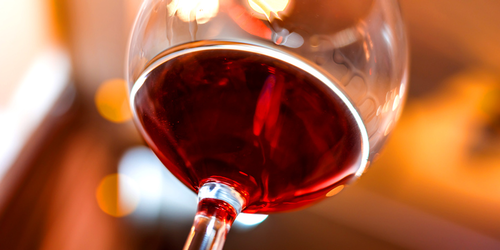Why My Wine Glass Cries
Before raising a glass of wine to their lips, a wine connoisseur swirls the glass and observes the drops, or “tears,” that form on the side of the glass. Besides looking highly sophisticated, this gesture can indicate a wine’s alcohol level, with more tears meaning more alcohol. An understanding of these tears has long been based on the so-called Marangoni effect—an evaporation-induced liquid flow. But a team from the University of California, Los Angeles (UCLA), now shows that this effect is only half the story. Using calculations and experiments, the researchers identify an unstable shock wave as the source of the tears.
The swirling of a wine glass leaves a thin film of fermented beverage on the wall of the glass. The alcohol in that film evaporates faster than the rest of the liquid, which is mostly water. This evaporation leads to the film having a higher surface tension than the wine in the bottom of the glass, and the resulting surface-tension gradient produces the Marangoni effect—a flow of wine up the side of the glass. However, this explanation doesn’t address why the upward flow breaks into tears.
In their study, the UCLA team performed a theoretical analysis that included gravitational effects neglected in previous models. They found that the upward flow is characterized by a climbing wave, whose thickness drops off abruptly at its trailing edge. This wave, called a reverse undercompressive shock, is known to be unstable. Thus any inhomogeneities in the shock wave grow into thick drops that eventually fall as tears. In experiments with pre-swirled wine glasses, the team observed the shock wave as a ridge in the climbing liquid.
This research is published in Physical Review Fluids.
–Michael Schirber
Michael Schirber is a Corresponding Editor for Physics based in Lyon, France.




